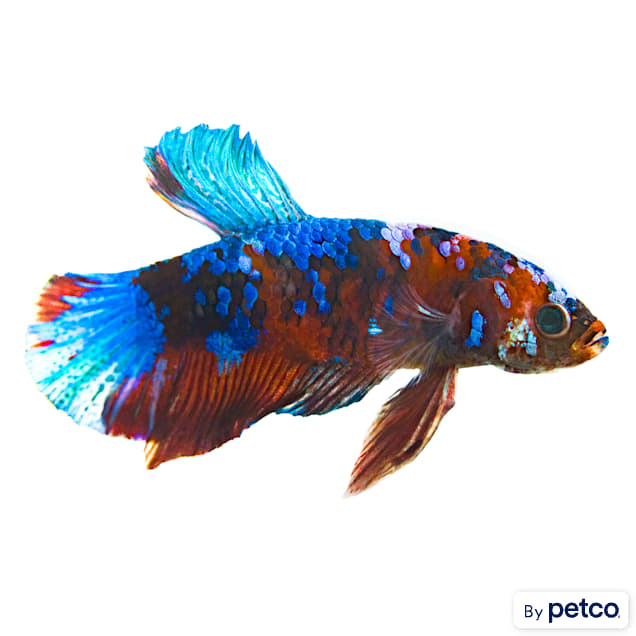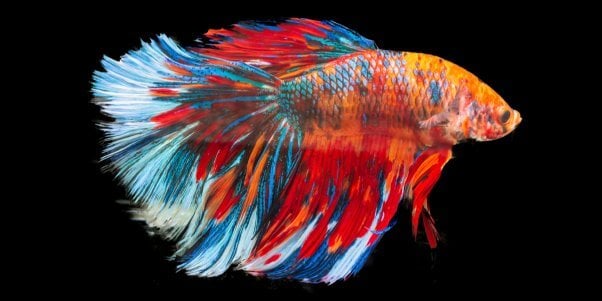Betta Fish Lifespan: Just How to Ensure Your Betta Lives Longer
Betta Fish Lifespan: Just How to Ensure Your Betta Lives Longer
Blog Article
Reproducing Betta Fish: a Comprehensive Step-By-Step Guide to Successfully Raising Baby Bettas From Eggs to Adulthood
Breeding Betta fish is a precise venture that calls for cautious planning and implementation to make sure the successful development of fry from eggs to mature fish. As the male Betta carefully constructs a bubble nest and guards the priceless eggs, the subsequent phases of treatment and shift need attention to detail and understanding of finest methods.

Selecting Reproduction Pairs
When starting the journey of breeding Betta fish, picking the right reproduction pairs is essential to attaining preferable attributes and a healthy and balanced family tree - betta fish. The very first step in this procedure is to identify the details characteristics you wish to improve or maintain, such as shade, fin kind, and physique. It is vital to choose genetically diverse pairs to avoid inbreeding, which can bring about health and wellness issues and unwanted features
Assess possible breeding candidates carefully. A healthy and balanced male Betta needs to exhibit vivid colors, an energetic temperament, and well-formed fins, while the lady should also display lively pigmentation and a rounded tummy, showing readiness for spawning. Observing the character of both fish is vital, as hostile or extremely shy people might not reproduce effectively.
Paperwork of family tree is just as essential. Keeping documents of the parent fish's ancestry can help you track hereditary attributes and possible issues. Furthermore, seek advice from trustworthy dog breeders or on-line resources for assistance on picking compatible sets. Inevitably, spending time in the option procedure will significantly improve the probability of creating solid, lively spawn that satisfy your reproduction objectives (betta fish).

Preparing the Reproduction Storage Tank
Creating an ideal breeding setting is a vital step after picking ideal sets for Betta fish. The reproduction tank ought to be specifically designed to supply comfort and stimulate the all-natural reproduction habits of the fish. Beginning with a tank size of at the very least 10 gallons to ensure sufficient room for both the male and women Bettas.
Maintain a mild filtering system to maintain the water tidy while staying clear of strong currents that can emphasize the fish. Furthermore, an air rock can be included in offer oxygenation without interfering with the water surface area also a lot.
Temperature regulation is vital; go for a secure variety of 78-82 ° F(25-28 ° C) using a reputable heater. The pH degree need to be maintained between 6.5 and 7.5, and regular water adjustments are needed to make sure high water top quality.
Include drifting plants or generating mops to produce hiding places for the woman, while likewise encouraging bubble nest structure by the male - betta fish. Make certain the tank is free from sharp decors and any kind of prospective dangers, as the welfare of the fish ought to always be prioritized throughout this crucial phase of breeding.
The Reproduction Process
Normally, the reproducing procedure for Betta fish includes a collection of distinct and visible actions that suggest readiness for reproduction. The male Betta starts by constructing a bubble nest at the water's surface, which functions as a website for the fertilized eggs. This nest is critical, as it offers a safe setting for the eggs till they hatch.
Once the nest is developed, the male will certainly show courtship habits, such as flaring his fins see this website and showing lively shades to draw in the woman. The lady, upon sensing the man's readiness, will certainly respond by presenting vertical stripes along her body, signifying her receptiveness.
When the female techniques, the male involves in a breeding dance, often resulting in an accept called the "spawning." Throughout this embrace, the woman releases her eggs, which the male feeds quickly. The fed eggs after that fall to the bubble nest, where the male very carefully accumulates and returns them to the nest. Following this, the male presumes responsibility for guarding the nest and guaranteeing the safety a knockout post of the eggs until they hatch, commonly within 24-36 hours. This stage is crucial in the breeding process, laying the structure for successful fry development.
Caring for Betta Fry
Looking after Betta fry requires cautious focus to their setting and nutrition to ensure healthy growth and growth. After hatching, Betta fry are extremely small and at risk, necessitating a stable and tidy habitat. Preserving a water temperature in between 78 ° F and 80 ° F is important, as Betta fry grow in cozy problems. Additionally, make sure that the water is without hazardous toxic substances; regular water adjustments of 10-20% are recommended to maintain optimum water top quality.
Feeding Betta fry is just as important. Feed them small quantities several times a day, being careful not to overfeed, which can lead to water top quality problems.
Transitioning to Grownup Bettas
As Betta fry fully grown, transitioning them to adult Bettas is an important stage that calls for cautious read here monitoring of their atmosphere and social communications. This process commonly starts when the fry reach around 6 weeks of age, at which point they can be gradually introduced to a much more structured living atmosphere.
To facilitate this shift, it is important to make sure that the water parameters-- such as temperature level, pH, and ammonia degrees-- are ideal and stable. Grown-up Betta fish prosper in warm water (around 78-80 ° F) with a pH of 6.5 to 7.5. Slowly adjust the fry to these conditions to minimize anxiety.
Social interactions are another vital variable; male Bettas are notoriously territorial and hostile. As a result, it is suggested to separate males right into individual tanks as they develop. Women Bettas can be housed together, but care needs to be taken to check for indications of aggression.
In addition, nutritional changes ought to be made as the fry grow. Integrate premium pellets and live foods to sustain their development and wellness. By taking care of these variables successfully, you can advertise an effective change to the adult years for your Betta fish.

Conclusion
Effective reproduction of Betta fish calls for careful attention to detail throughout the entire procedure, from selecting genetically varied sets to offering ideal treatment for fry. In addition, a balanced diet regimen and progressive adjustment to adult settings are critical for the development and advancement of Betta fish.
Report this page